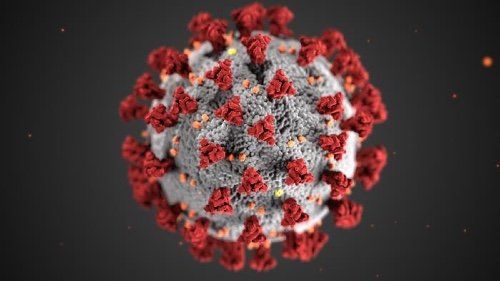CT Severity Scores Can Determine COVID-19 Extent
Percentage of lung opacities can be used to rate the severity of disease.

Using a chest CT severity score could help radiologists assess the extent of COVID-19 and more quickly identify which patients have the most severe cases.
Researchers in China developed a method, based on the degree of lung inflammation, to categorize which patients have mild or severe cases of COVID-19. The study is published in Radiology: Cardiothoracic Imaging.
“We envision that this relatively straight-forward method could provide objective means to expedite the identification of patients with severe disease, especially in situations of limited availability of healthcare resources,” wrote the team co-led by Ran Yang and Xiang Li of Chongqing University Three Gorges Hospital in China. “We envision that such an approach could have value in scenarios combining high patient volumes.”
Currently real-time reverse transcription polymerase chain reaction (RT-PCR) has been identified as the most effective and accurate way to diagnose COVID-19 infection, but imaging – specifically CT scans – can be helpful in assessing the extent of the disease, according to Yang’s team. Pinpointing measurable features on CT scans could go even further in augmenting evaluation and triage of patients.
To determine whether CT scans could be used to produce objective assessments about the extent of lung opacities, the investigators reviewed chest CTs of 102 patients from their hospital who were confirmed, through RT-PCR, to have COVID-19. They divided the 18 segments of both lungs into 20 regions and evaluated lung opacities in each region. Using the percentage of opacification, they gave each region a severity score of 0, 1, or 2, with a maximum possible score of 40.
A Score 0 had 0 percent parenchymal opacification. Score 1 had less than 50 percent, and Score 2 had 50 percent or more involvement.
According to the study results, 84 cases were mild, and 18 were severe. The team determined that patients with more severe cases had higher chest CT severity total scores, as well as higher score in individual lungs. They identified a severity score of 19.5 as the bar for critical cases.
“We determined that the CT severity score threshold of 19.5 could identify severe COVID-19, with a sensitivity of 83.3 percent, and a specificity of 94 percent, resulting in a negative predictive value of 96.3 percent,” they wrote.
Specifically, 15 patients with severe disease had a severity score of at least 19.5, and three had score below the threshold. In comparison, five patients in the mild group had at least a 19.5 severity score while 79 fell below that level. Consequently, the team said, their findings had a disease severity positive predictive value of 75 percent.
Overall, the team said, these results point to CT as being an effective tool for determining disease burden.
“This study provides a straight-forward, semi-quantitative method for assessing severity of COVID-19 in the initial chest CT,” they concluded.
CT Perfusion Study Shows Enhanced Detection of Medium Vessel Occlusions with Emerging AI Software
May 21st 2025The Rapid CTP AI software offered 23 percent greater detection of medium vessel occlusions in comparison to the Viz CTP AI software, according to research presented at the European Stroke (Organization) Conference (ESOC).